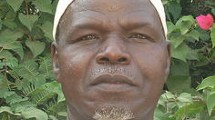Abstract
During the 51st annual American Dance Therapy Association conference, this author participated in a cross-disciplinary panel, “Polyvagal-informed therapy for trauma, attachment and autism,” with Dr. C. Sue Carter, Executive Director of the Kinsey Institute and Rudy Professor of Biology at Indiana University and Dr. Stephen W. Porges, Distinguished University Scientist at the Kinsey Institute at Indiana University Bloomington and Research Professor in the Department of Psychiatry at the University of North Carolina at Chapel Hill. This following article reprints the author’s remarks on this panel, and explores how mutual dialogue between dance/movement therapy (DMT) and affective neuroscience can enrich both fields. A more nuanced understanding of DMT’s impact and potential is afforded by mutual, ongoing dialogue with affective neuroscience colleagues that illuminate the work. This contribution includes a brief experiential and case vignette that illustrates how polyvagal regulation and oxytocin activation are supported and stimulated through DMT.
Similar content being viewed by others
Author information
Authors and Affiliations
Corresponding author
Ethics declarations
Conflict of interest
This author was invited by the American Dance Therapy Association to participate in the cross-disciplinary panel at the 51st annual conference.
Rights and permissions
About this article
Cite this article
Homann, K.B. Engaging the Dynamic Equilibrium of the Mind Through Dance/Movement Therapy. Am J Dance Ther 39, 39–42 (2017). https://doi.org/10.1007/s10465-017-9251-7
Published:
Issue Date:
DOI: https://doi.org/10.1007/s10465-017-9251-7



